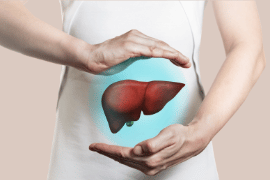Abusing alcohol can have a profound effect on a person’s life. Learn about the dangers of alcohol abuse and how to get help for alcoholism.
Responsible for over 5% of all deaths, alcohol abuse is the fourth leading cause of preventable death worldwide. The substance has significant power to rewire the brain and create a physical dependence, leading to severe withdrawal symptoms when alcohol use is stopped.
Alcohol use disorders can result in many physical, psychological and social effects, from weight gain and liver dysfunction to domestic violence, loss of income, unemployment and damage to unborn children. Understanding alcohol use and seeking available resources are instrumental ways to diminish the influence of alcohol.
What Is Alcohol Addiction?
Alcohol addiction, or alcoholism, occurs when the individual has a drive to use alcohol, regardless of the unwanted consequences. Addiction is different from dependence: dependence is a physiological process while addiction is psychological. Though they can occur separately, they usually emerge at the same time.
According to the American Psychiatric Association (APA), alcohol addiction, or alcohol use disorder (AUD), is considered a mental health disorder in which the drug causes lasting changes in the brain’s functioning. These changes make continued use and relapse more likely in the future. Because symptoms can range from mild to severe in intensity, alcoholism can create numerous effects on someone’s mental, physical, social and spiritual health.
Many variables and individual differences increase the risk of alcohol abuse and alcohol addiction. Some of the most prevalent risk factors for alcohol addiction include:
- Binge drinking and heavy drinking
- Drinking before age 15
- Genetics and a family history of alcohol problems
- Co-occurring mental health conditions, like depression, anxiety, personality disorders and schizophrenia
- History of traumatic experiences
Not everyone who abuses alcohol will develop an addiction, but as use continues, the risk grows.
Signs of Alcohol Abuse
The signs of alcohol abuse are numerous and will negatively impact many facets of a person’s well-being over time. Physical, psychological and social signs of alcohol abuse may include:
Physical Signs of Alcohol Abuse
Many signs of alcohol abuse can appear in the short term, including:
- Drinking larger amounts of alcohol than previously consumed
- Spending more time, money and energy working on getting and using alcohol
- Spending more time being hungover and recovering from alcohol’s effects
- Frequently showing signs of intoxication, like slurred speech, poor coordination and walking problems
- Increased injuries from falling or engaging in risky behaviors
- Decreased self-care and poor hygiene
- Smelling of alcohol or having many empty bottles around the house
- Significant weight changes
Other physical signs of alcohol abuse require prolonged use and include:
- Cardiac issues, like high blood pressure, stroke and irregular heartbeat
- Liver problems, like fatty liver, hepatitis, fibrosis and cirrhosis
- Pancreatitis
- Various cancers
- Weakened immune system
Psychological Signs of Alcohol Abuse
The psychological signs of alcohol abuse emerge when the substance interferes with usual brain functioning. The most common emotional signs of alcoholism include:
- Rapidly changing moods
- Increased irritability, anger and aggression
- Failing to follow throughout on responsibilities
- Problems with memory, concentration and attention
- New or worsening anxiety
- Possible hallucinations or delusional thinking, especially during periods of withdrawal
Alcohol addiction’s psychological signs can either mask a mental health condition by covering up its symptoms or intensify symptoms of a co-occurring disorder. Accurately identifying all present psychological disorders is extremely challenging when alcohol abuse is still happening.
Social Signs of Alcohol Abuse
Alcohol abuse’s effects extend beyond the physical and psychological to include social influences. The most common social signs of alcohol abuse include:
- Spending less time around friends and isolating oneself
- Spending more time in new and changing social groups
- Increased lying and deceitfulness
- Failing to follow through on plans
- Increasing conflicts with friends, family and coworkers
- Decreased performance in school, work or sports
Socially, a person with an addiction to alcohol will likely be very inconsistent. One day, they could be happy and outgoing. The next day, they could be feeling down, angry and hostile. Unpredictable social interactions are a strong indicator of substance use disorders.
Effects of Alcohol Abuse
Alcohol intoxication will produce many of the effects of alcohol abuse. Though the effects may vary between individuals, common reactions to alcohol consumption include:
- Slurred speech
- Incoordination
- Problems walking steadily
- Poor memory and attention
- Mood changes
- Poor judgment
Many of these effects are dependent on the amount of alcohol consumed. Someone could have a desirable mood change after a drink or two, but undesirable mood changes with inappropriate or aggressive behaviors with additional drinks. As people continue drinking, they risk overwhelming their system with alcohol and experiencing alcohol poisoning.
Alcohol poisoning can be fatal. If you suspect someone is experiencing alcohol poisoning, call 911 immediately. Do NOT be afraid to seek help. If you do not have access to a phone contact Web Poison Control Services for online assistance.
In the long term, addictions like alcohol use disorder make daily activities nearly impossible. A recent poll by The Recovery Village found physical health (61%), mental health (52%) and relationships (47%) are the most common negative impacts on daily life. In many cases, people will also struggle to maintain their jobs, parental responsibilities, housing, financial health and hygiene. Alcohol use can even threaten someone’s freedom due to legal issues. Left untreated, alcoholism can destroy everything the person has worked hard to achieve.
Outlook for Alcoholism
With its ability to negatively impact nearly every facet of mental and physical health, alcoholism can leave lingering effects on the individual. Fortunately, if a person can end their substance abuse, their body and brain can begin the recovery process.
Before the recovery, a person physically dependent on alcohol must experience a period of alcohol withdrawal. During this time, a person can expect a series of uncomfortable symptoms, like:
- Sweating
- Rapid heart rate
- Shakiness or tremors
- Anxiety or stress
- Mood swings
- Irritability
- Inability to sleep
- Nausea and vomiting
- Hallucinations
- Seizures
Many of these symptoms begin within a few hours following last use and generally last 2–8 days. Some symptoms, like anxiety and poor sleep, can last for six months or more. Though this may be discouraging, people in recovery from alcohol use can establish a happy and fulfilling life with time and patience.
How Addictive Is Alcohol?
Alcohol can be a highly addictive substance, especially when consumed in large amounts within a short period of time. Alcohol addiction develops in several stages. The process of addiction may begin with the first drink, with physical and mental factors that can escalate quickly.
Brain Chemistry During Alcohol Use
Like any other addictive drug, alcohol affects the brain’s chemistry. When a person drinks alcohol, the drug causes their brain to release the neurotransmitters, which are chemicals responsible for signaling (among other things) pleasure and reward. In the brain, alcohol increases the effects of neurotransmitters that slow the body down while also decreasing the effects of neurotransmitters that speed the body up. The combined effect results in many of the intoxicating effects of alcohol.
Alcohol Tolerance
Once the effects of alcohol wear off, so does the feeling of happiness, pleasure and satisfaction caused by the neurotransmitters. A person can experience these feelings again if they drink alcohol again. After a period of continued alcohol abuse, it takes more substantial quantities of alcohol to achieve the same effect. This process is called tolerance and causes people to use higher amounts of alcohol over time to achieve the same level of intoxication.
Related Topic: What happens when you drink alcohol everyday
Alcohol Dependence, or Physical Dependence
As alcohol use continues, the body and brain begin to adjust to the neurochemistry changes caused by the alcohol. This adjustment, called dependence, makes it necessary to have alcohol so the brain and body can function normally.
Alcohol Withdrawal
If alcohol use is stopped, someone who has been misusing alcohol and is dependent on it will experience withdrawal symptoms. During withdrawal, the brain has become so accustomed to alcohol that it has a volatile reaction when the drug is removed, causing headaches, vomiting, sweating, anxiety and other symptoms.
Alcohol Addiction, or Physical and Psychological Dependence
Alcohol addiction is marked by the obsessive desire to consume alcohol, regardless of the negative consequences. Dependence is a physical process, while addiction is a form of psychological dependence. At this point, the person engaging in alcohol abuse will likely experience many negative side effects from drinking — such as financial trouble or legal trouble — but cannot stop themselves from continuing to drink.
How Is Alcohol Abuse Diagnosed?
Physicians and mental health experts use a combination of visual assessment and interview skills to accurately diagnose alcohol issues, including abuse, addiction and dependence. In some cases, a physical exam could be used to identify intoxication or withdrawal.
The formal diagnosis for someone with a problematic relationship with alcohol is alcohol use disorder. To diagnose this condition, a professional would investigate the most important factors like:
- Drinking more often and in larger amounts than intended
- Inability to follow through on intentions to stop drinking
- A large amount of time spent drinking or being hungover
- Strong cravings to continue alcohol use
- Neglect of normal activities
- Increased conflict in relationships
- Drinking alcohol even though it is causing physical or mental health problems
- Drinking in a situation where there is great danger, like while driving
- Increased physical tolerance to alcohol
- The presence of withdrawal symptoms when alcohol use is stopped
A person only needs two of these signs and symptoms to receive an alcohol use disorder diagnosis. Having more symptoms could indicate a more serious condition.
While these factors may be used to diagnose alcohol abuse, an accurate diagnosis depends upon your honesty with your treatment provider. Being honest with a doctor is vital to understanding if alcohol abuse is something that should be diagnosed.
Related Topic: Am I An Alcoholic? What to Ask
Alcohol Addiction Statistics
Scientists and researchers have been tracking statistics about alcohol consumption and rates of alcohol-related deaths for decades. This research effort is so substantial that the U.S. government created the National Institute on Alcohol Abuse and Alcoholism (NIAAA) in 1970.
Every year, the NIAAA publishes new data on alcohol abuse, alcohol-related deaths and other important statistics. Some of the latest statistics on alcohol addiction in America include:
- 85.6% of adults ages 18 and over report they drank alcohol at some point in their lifetime
- 69.5% of adults report drinking within the last year and 54.9% report drinking within the last month
- 25.8% of adults report binge drinking within the last month.
- 14.5 million people age 12 or older have an alcohol use disorder
- Globally, 107 million people are estimated to have an alcohol use disorder.
- Only 7.2% of people with an alcohol use disorder received treatment.
- More than 10% of American children live in a household where at least one parent has a drinking problem.
- Alcohol abuse is a leading risk factor in contracting mouth, esophagus, pharynx, larynx, liver and breast cancer.
- It is estimated that every six hours, a college student dies from alcohol-related unintentional injuries, including car crashes.
The Recovery Village 2020 Alcohol Survey Results
We surveyed 2,136 American adults who either wanted to stop drinking alcohol or had already tried to (successfully or not). We asked them about their alcohol use, reasons for drinking, alcohol-related outcomes, health and more. A subset of the study’s respondents (47.1%) qualified as heavy alcohol users. Research shows that people who drink before the age of 15 are four times more likely to become addicted to alcohol later in life.
Among those surveyed:
- 10.1% had their first alcoholic drink at 11 years old or younger
- 37.5% had their first alcoholic drink between 12–17 years old
- 39.7% had their first alcoholic drink between 18–25 years old
- 12.6% had their first alcoholic drink at 26 years old or older
Alcohol use disorder can involve feeling like you need to drink to keep going, but it doesn’t start that way. Multiple different reasons can spur someone to drink until they’ve become dependent on alcohol. Among those surveyed:
- 64.9% used alcohol to cope with stress (to relax, unwind, or deal with life)
- 43.5% used alcohol to cope with mental health symptoms like anxiety or depression
- 61.9% used alcohol recreationally or socially
- 38.1% used alcohol out of boredom
- 16.6% reported being physically dependent on alcohol
- 17.8% used alcohol as part of their daily routine (i.e., a drink with dinner)
Only 7.2% of people with an alcohol use disorder received treatment.
The number of people who struggle with alcohol addiction is staggering. What is even sadder is that many of these people will not receive the help they need. The good news is that most people with an alcohol use disorder will benefit from treatment. While many people will not receive the help they need, those who do seek help are likely to see a positive result from getting rehab for alcohol addiction.
Alcohol Addiction Research by The Recovery Village
To support this choice towards recovery and an alcohol-free life, The Recovery Village dedicates itself to understanding the why and how of alcohol addiction. In a recent study by The Recovery Village, we asked over two thousand people about their alcohol use.
When asked about their reasons for drinking alcohol:
- 65% used alcohol to cope with stress (to relax, unwind, or deal with life)
- 44% used alcohol to cope with mental health symptoms like anxiety or depression
- 62% used alcohol recreationally or socially
- 38% used alcohol out of boredom
When asked if any health issues they had were related to their alcohol use:
- More than 1 in 3 reported depression (38%)
- Nearly 1 in 3 reported high blood pressure (31%)
- 1 in 6 reported liver disease (17%)
- 1 in 10 reported cirrhosis (scarring of the liver) (12%)
- 1 in 10 reported cardiovascular disease (11%)
- 1 in 7 reported a weakened immune system (15%)
- 1 in 10 reported nerve damage (11%)
- 1 in 12 reported pancreatitis (8.4%)
- 1 in 11 reported seizures (9%)
- 1 in 13 reported cancer (7.8%)
About 47% of respondents qualified as heavy drinkers, which significantly increases their chance of developing an alcohol use disorder if they didn’t already have one. Consistently, heavy drinkers reported every health complication more often than average and significantly more than moderate or light alcohol users. Heavy drinkers in our study had more than doubled their risk for having a health issue. They were :
- 2.12 times more likely to have liver disease
- 2.26 times more likely to have cirrhosis (scarring of the liver)
- 2.06 times more likely to have high blood pressure
- 2.26 times more likely to have cardiovascular disease
- 2.77 times more likely to have nerve damage
- 2.18 times more likely to have pancreatitis
They were also at higher risk for other common health complications compared to moderate or light drinkers. Heavy drinkers were:
- 85% more likely to be depressed
- 61% more likely to have a weakened immune system
- 73% more likely to have seizures
- 48% more likely to have cancer
Co-Occurring Conditions
Alcohol and other mental health disorders share a bidirectional relationship. Alcohol can make other conditions emerge or become worse; having another condition can make alcohol use disorders worse as people drink to cope with their mental health issues.
Alcohol use disorder frequently co-occurs with several other conditions like:
- Depressive disorders
- Anxiety disorders like generalized anxiety disorder or social phobia
- Antisocial personality disorder
- Bipolar disorders
- Schizophrenia
A person with social anxiety, for example, may begin drinking alcohol as a negative coping skill to reduce symptoms. Alcohol does not “cure” anxiety; it only covers symptoms. The anxiety disorder would continue while the alcohol use disorder grows. Alternatively, sometimes a person with long-term alcohol use may disrupt normal neurotransmitter flow in the brain, which could trigger new or worsening symptoms of a mental health condition.
Common Questions about Alcohol Abuse:
Alcoholism has no single cause. Rather, it is a detailed combination of genetic markers and environmental precursors all mixed together. There is a hereditary role in the development of alcohol dependence, but no alcohol addiction gene has ever been isolated. Having a parent who is an alcoholic makes you four times more likely to be one yourself, per the American Academy of Child and Adolescent Psychiatry.
Environmental factors are part of the mix, too. Growing up in a household where alcohol is prevalent also increases the risk of alcoholism in your future. Your involvement with peers as you grow up and the age at which you begin drinking also contribute. People who drink before the age of 15 are four times more likely to become addicted to alcohol later in life.
Mental health plays a significant role in all forms of substance abuse. Among alcoholics specifically, 37% have at least one serious mental health disorder, such as bipolar disorder, according to the N
There are several reasons why alcohol is addictive. Some of the key points for the addictive nature of alcohol include:
- Alcoholism can develop because alcohol changes the brain’s neurochemistry.
- Alcohol can lead to physical and psychological dependence.
- When someone becomes physically dependent on alcohol, they can experience withdrawal symptoms if they stop, making it more difficult to stop.
A high-functioning alcoholic is pretty much how it sounds. These problem drinkers are able to keep their careers or home lives together as they continue with their alcohol abuse. High-functioning alcoholics might be successful in business or pillars of the community, but they drink enough to have an alcohol dependence and often conceal how much they truly consume.
Some signs of a high-functioning alcoholic include:
- They become irritable or restless when they are unable to drink.
- They would rather have a few drinks instead of a meal.
- Stopping at one or two drinks is next to impossible.
- They suffer periods of memory loss or “blackouts.”
- They refuse to discuss their drinking or become angry when it is mentioned.
- They can always conjure a “reasonable” explanation for when and why they drink.
- They hide their alcohol or attempt to conceal how much they are drinking.
The three gateway drugs are nicotine, alcohol and cannabis. The concept is based on the “gateway hypothesis,” which states that adolescents who experiment with these drugs are more likely to use other addictive drugs later in life. The controversy and conflicting research can be confusing, but some conclusions can still be made:
- Alcohol does increase the likelihood of other drug use, including the other gateway drugs (tobacco and cannabis).
- Addiction is a complex disease – prior use of alcohol is simply another risk factor among many, and there is no single explanation for why someone becomes addicted.
- The interrelationships between the gateway drugs (tobacco, alcohol and cannabis) are complex.
- Targeting alcohol use in adolescents will likely impact the development of other substance use disorders later in life.
Drinking alcohol every day can have serious consequences for a person’s mental and physical health, both in the short- and long-term.
Alcohol has complex effects in the body and can affect multiple organs and systems like the heart, kidneys, gastrointestinal tract, vasculature system, and liver. There are different short- and long-term consequences for each of these systems.
Many of the effects of drinking every day can be reversed through early intervention but become harder to treat with time. It’s critical to recognize alcohol abuse and treat alcoholism as early as possible to avoid irreversible damage to the brain and body.
In short:
- Alcohol can affect the G.I. tract, heart, kidneys, liver and vascular system in the short term.
- Chronic alcohol abuse can include arrhythmias, cirrhosis and risk of stroke.
- Alcohol abuse can contribute to or worsen mental health conditions over time.
- Chronic drinking can lead to diseases like cardiovascular disease and cancers.
Treatment Options for Alcoholism
Various treatment options exist for alcohol addiction and alcohol use disorders. People should always seek out a professional evaluation since not all levels of treatment are appropriate for all people.
Inpatient/residential treatments are generally more intensive for people with more severe symptoms of addiction and dependence. These treatments offer around-the-clock care administered by a team of professionals. To maintain a safe environment for the individual, they will live at the treatment facility and have limited contact with people outside of the center initially.
Outpatient care involves treatments that allow the person to live at home, work and maintain other routines while attending care. Rather than living at the treatment center, the person will attend their appointment and then return home. Intensive outpatient care could involve several hours of treatment several times per week to offer more support to people in need.
According to a recent survey by The Recovery Village, out of the people initiating treatment:
- 34.9% started rehab in inpatient or residential treatment
- 24.2% started in intensive outpatient treatment
- 26.1% started in outpatient care
- 14.8% started rehab in teletherapy
Treatments must be intensive enough to meet the client’s needs without being overly restrictive or burdensome, so typically a person with frequently excessive drinking will need higher care. The Recovery Village discovered that heavy drinkers were 2.42 times more likely to attend inpatient or residential rehab than any other treatment program, most likely due to the increased needs involved with heavy alcohol use.
People with fewer symptoms or additional responsibilities at home or work may opt for outpatient or telehealth offerings to limit the life disruption. These programs offer tremendous flexibility to assess and address each person’s addiction.
The intensity of treatment is important, but the duration will also dictate the effectiveness of services. According to The Recovery Village survey:
- 55.4% spent less than 30 days in rehab
- 27.1% spent 31–60 days in rehab
- 10.8% spent 61–90 days in rehab
- 6.7% spent more than 90 days in rehab
Overall, longer periods of treatment tend to be more helpful than shorter services. With addiction treatment, it is vital to keep the process going after rehab. People who successfully complete a period of inpatient or residential care should seamlessly transition to outpatient care with a strong aftercare plan.
Outside of professional services, support groups like A.A. can help keep people moving towards their recovery goals. Ongoing addiction treatment can help to minimize relapses and establish longer periods of recovery.
Finding the Help You or Your Loved One Needs for Alcoholism
If you or a loved one struggles with alcohol addiction, help is available. The most important step to recovering from alcohol addiction is seeking treatment. The caring team members at The Recovery Village understand how difficult it is to take the first step of getting help.
The Recovery Village is here for you and would welcome the chance to help you start your path to a full recovery. Reach out to our team today to learn more about comprehensive treatment for alcohol abuse and how you or your loved one can become free from an addiction to alcohol.
Related: Starting Alcohol Treatment with Online Rehab
Articles Related to Alcoholism

Alcohol detox isn’t easy and not everyone can do it on their own. That is why alcohol detox and alcohol withdrawal treatment is administered by medical professionals.

Alcoholism takes many forms, and the stereotype doesn’t always hold true. So when do a few drinks with friends become a full-blown alcohol addiction? How do you know if you are an alcoholic?

While cirrhosis scars from excessive drinking are irreversible, quitting alcohol and leading a healthier lifestyle can help your liver heal from alcohol-related liver disease.

When detoxing, hydration is key. However, certain food groups also have benefits when it comes to helping with the discomfort of withdrawal symptoms and detoxification.

Detox from alcohol can begin within hours. Typically, alcohol withdrawal symptoms happen for heavier drinkers. Alcohol withdrawal can begin within hours of ending a drinking session.

Daily drinking can have serious consequences for a person’s health, both in the short- and long-term. Many of the effects of drinking every day can be reversed through early intervention.


Alcohol Side Effects
Thompson, Warren. “Alcoholism: Practice Essentials.” Medscape, March 23, 2020. Accessed March 5, 2021.
Anderson, Pauline. “WHO Reports 3 Million Alcohol-Related Deaths in 2016.” Medscape, September 27, 2018. Accessed March 5, 2021.
Clapp, Peter et al. “How Adaptation of the Brain to Alcohol Leads to Dependence.” Alcohol Research and Health, National Institute on Alcohol Abuse and Alcoholism, 2008. Accessed March 5, 2021.
National Institute on Alcohol Abuse and Alcoholism. “Understanding Alcohol Use Disorder.” December 2020. Accessed March 5, 2021.
Maisto, Stephen A. et al. “Diagnosis.” National Institute on Alcohol Abuse and Alcoholism, August 2004. Accessed March 5, 2021.
National Institute on Alcohol Abuse and Alcoholism. “Drinking Levels Defined.” Accessed March 5, 2021.
National Institute on Alcohol Abuse and Alcoholism. “Alcohol Fact and Statistics.” February 2021. Accessed March 5, 2021.
National Institute on Alcohol Abuse and Alcoholism. “Alcohol’s Effects on the Body.” Accessed March 5, 2021.
American Academy of Child and Adolescent Psychiatry. “Alcohol Use in Families.” May 2019. Accessed March 5, 2021.
National Alliance on Mental Illness. “Mental Illness and Substance Abuse.” January 2010. Accessed March 5, 2021.
Nkansah-Amankraa, Stephen and Minelli, Mark. “Gateway hypothesis” and early drug use[…]escents to adulthood.” Preventive Medicine Reports, December 2016. Accessed March 5, 2021.
National Institute on Drug Abuse. “Principles of Drug Addiction Treatment: […]uide (Third Edition).” January 2018. Accessed March 5, 2021.
Substance Abuse and Mental Health Services Administration. “Detoxification and Substance Abuse Treatment.” October 2015. Accessed March 5, 2021.
American Psychiatric Association. “Diagnostic and Statistical Manual of Mental Disorders – Fifth Edition.” 2013. Accessed March 5, 2021.
Ritchie, H; Roser, M. “Alcohol Consumption.” Our World in Data, November 2019. Accessed September 9, 2021.
The Recovery Village aims to improve the quality of life for people struggling with substance use or mental health disorder with fact-based content about the nature of behavioral health conditions, treatment options and their related outcomes. We publish material that is researched, cited, edited and reviewed by licensed medical professionals. The information we provide is not intended to be a substitute for professional medical advice, diagnosis or treatment. It should not be used in place of the advice of your physician or other qualified healthcare providers.